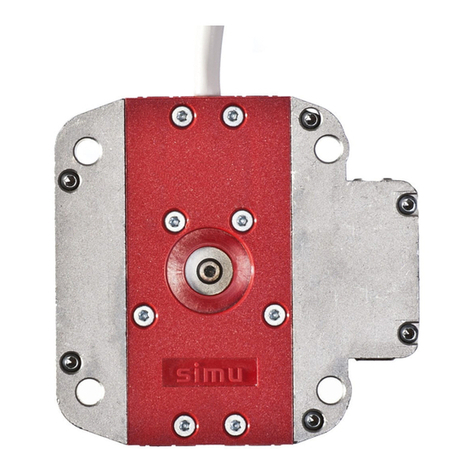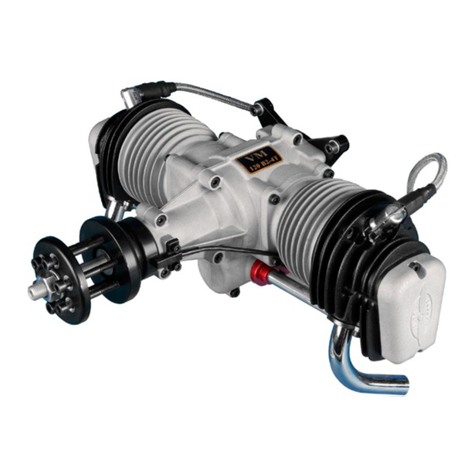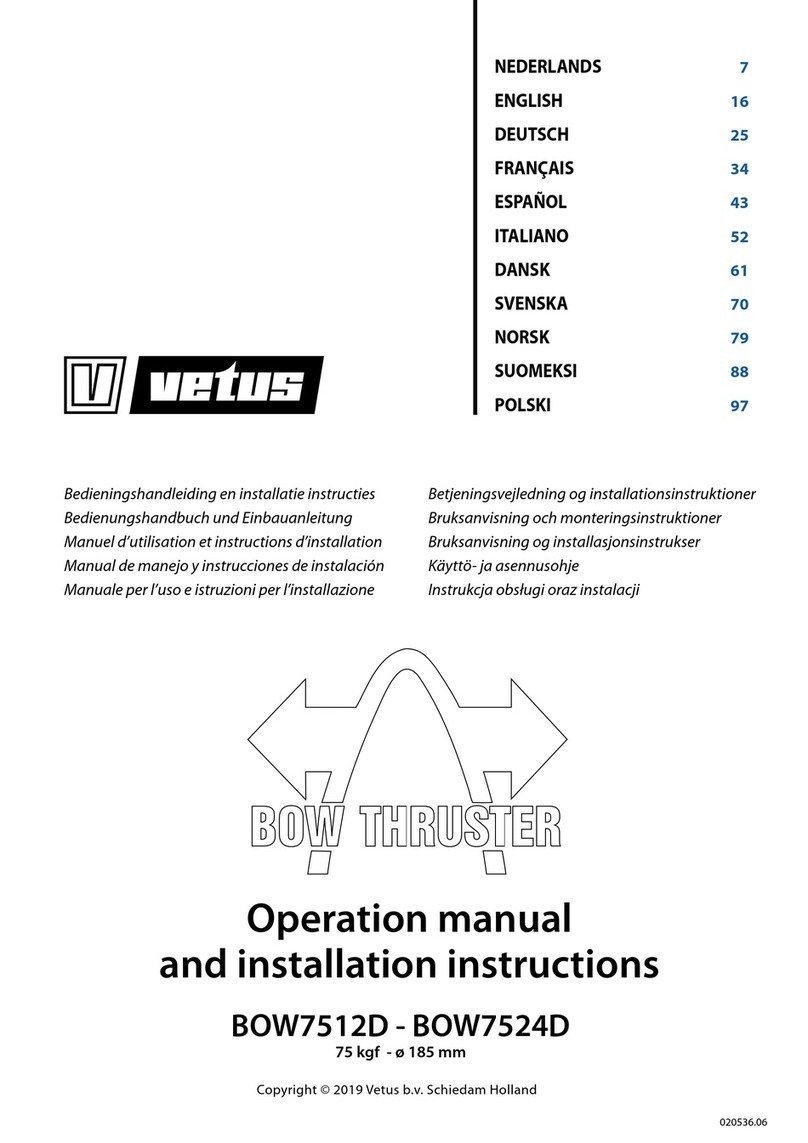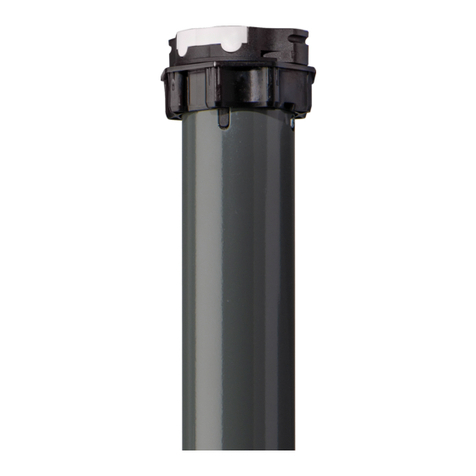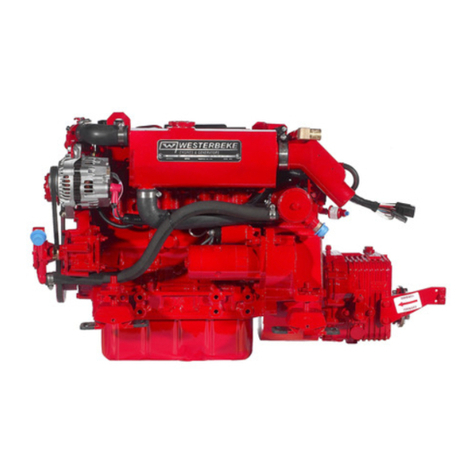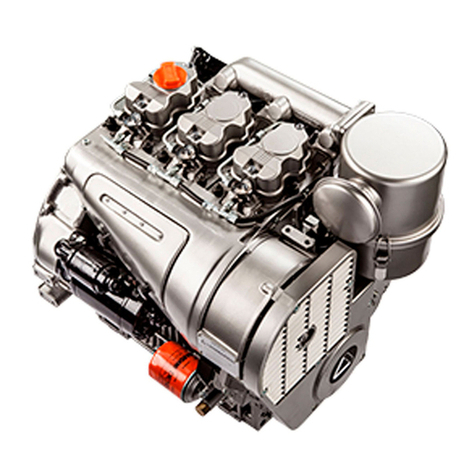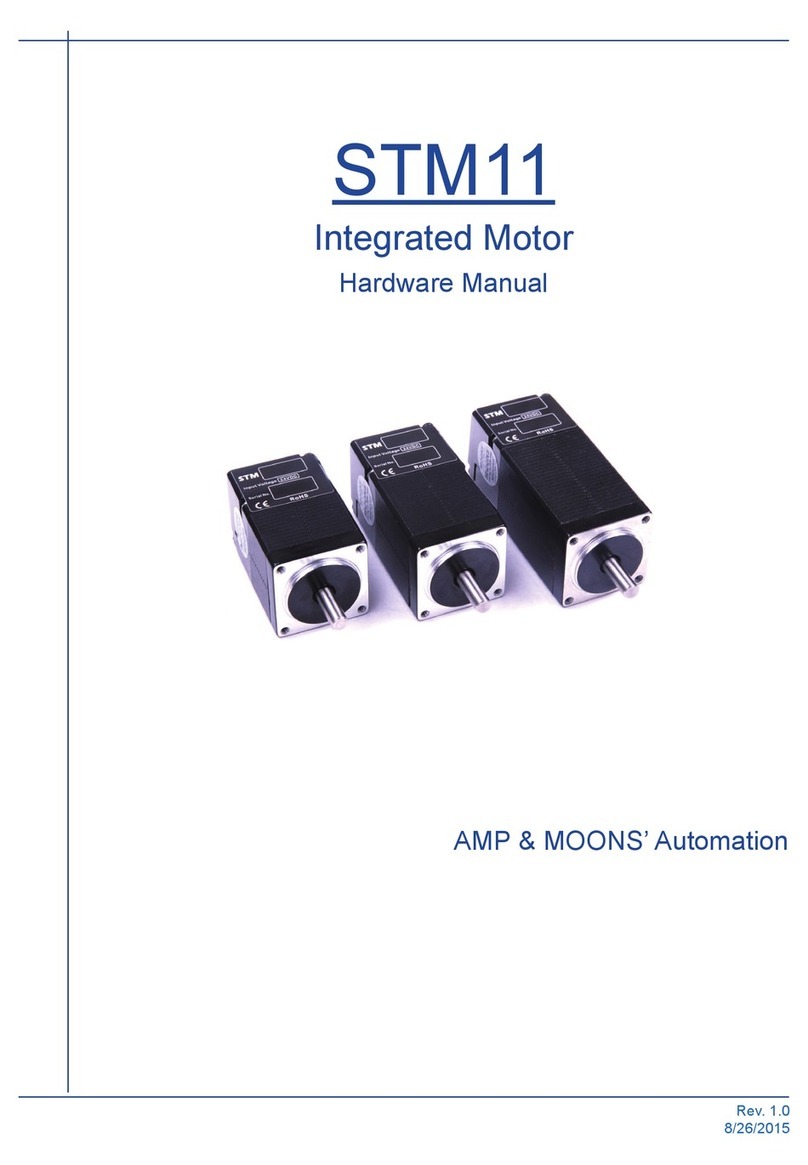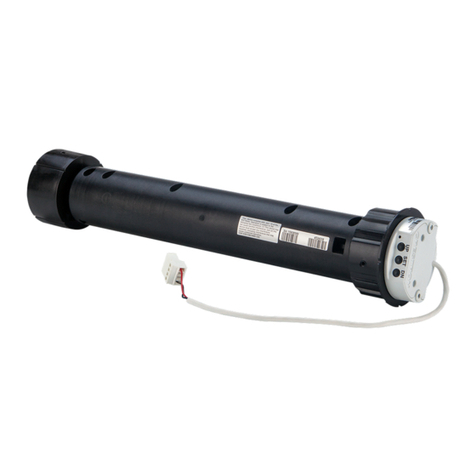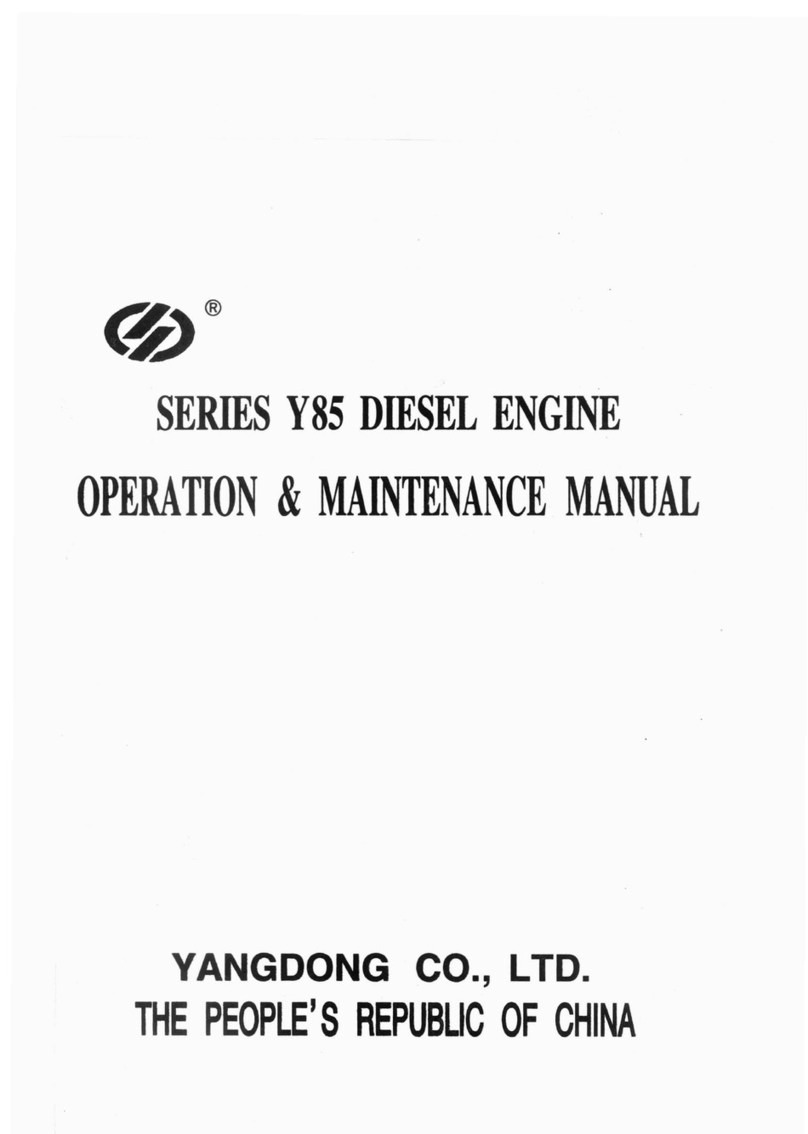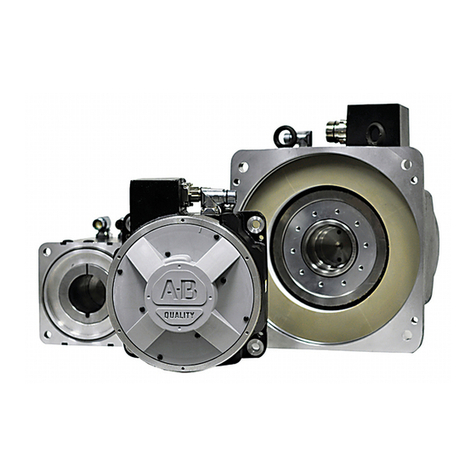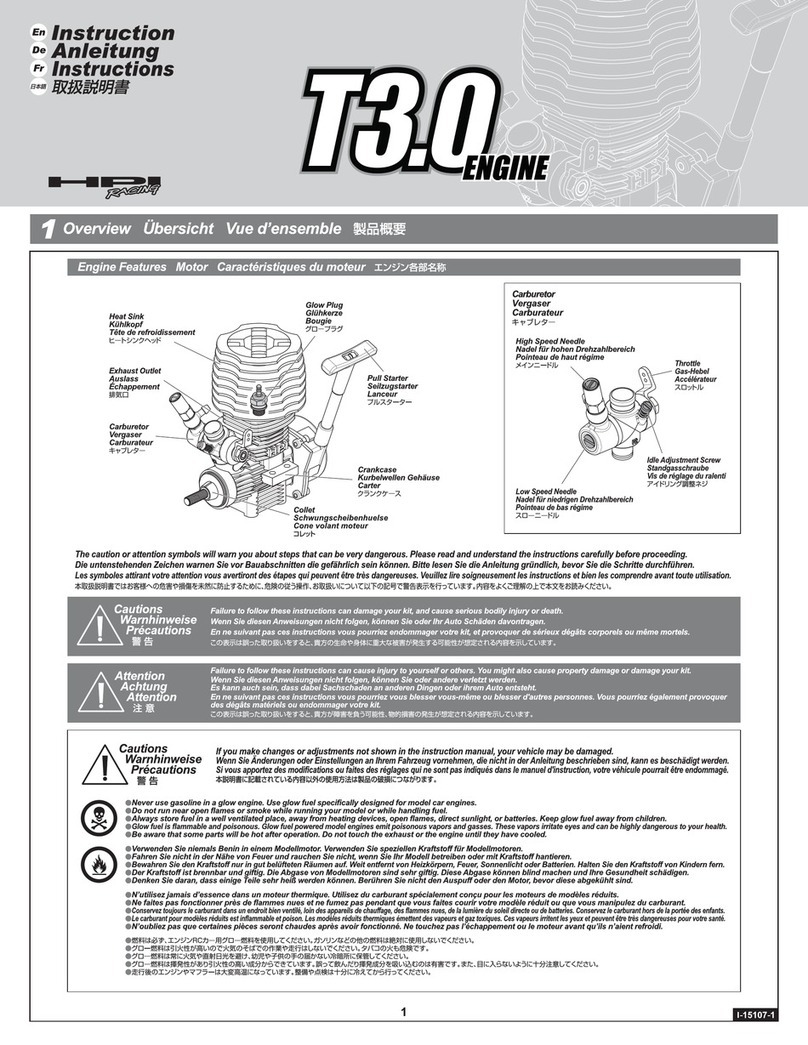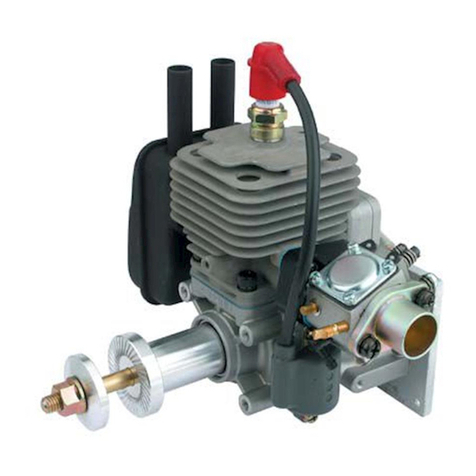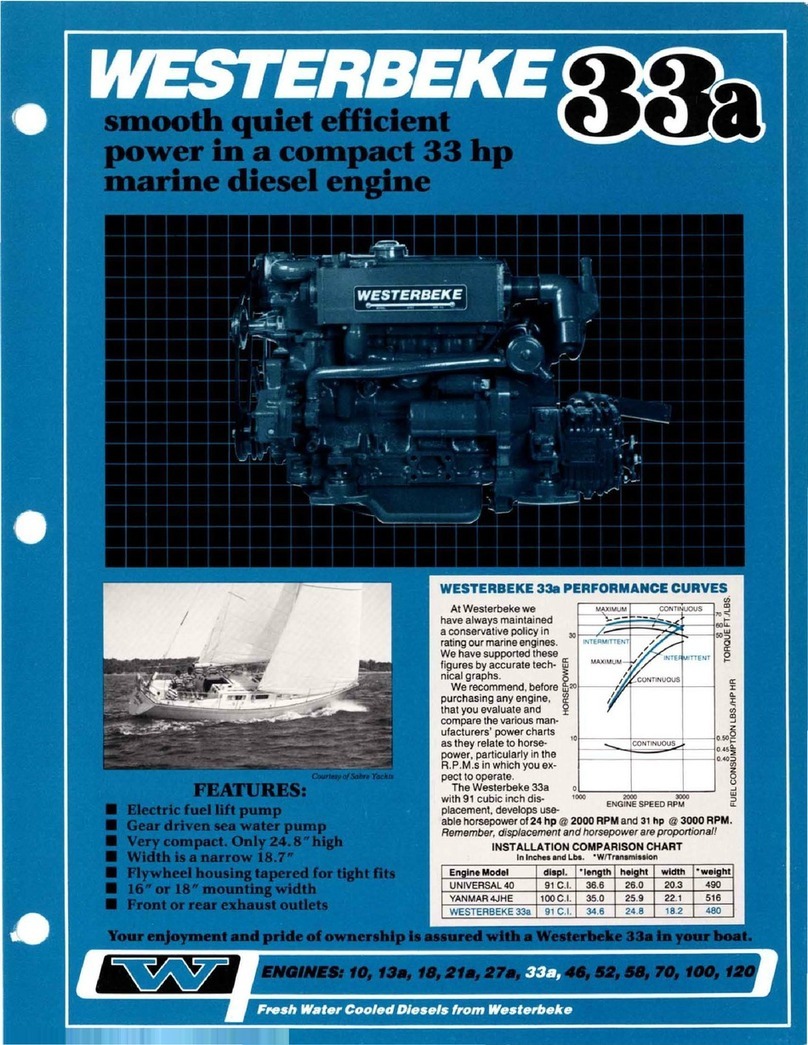Himax HC3516-1130 User manual

Operation:
1. Himax Brushless motors require brushless sensorless speed
controls. Failure to use a brushless sensorless electronic
speed control (ESC) can result in damage to the motor and/or
ESC. A Castle Creations Phoenix series ESC is recommended
for best performance. The standard setting for timing advance
is recommended for best operation.
2. The three wires of the motor can be connected to the three
output leads of the ESC in any order. Check the direction of
rotation of the motor. If the motor spins in the wrong direction
switching any two of the motor wires will reverse rotation. Be
sure to insulate the wires to prevent shorting which may dam-
age the ESC.
3. Do not shorten the motor wires. Shortening or cutting the
motor wires voids the warranty and may cause motor failure. If
the supplied connectors are not to be used, remove them by
desoldering. DO NOT CUT THE CONNECTORS OFF!
4. Allow for proper cooling of the motor during operation. With
extremely high capacity batteries, care must be taken to pre-
vent excessive motor temperature. Overheating of the motor
is not covered under warranty. Insufficient cooling can result in
overheated motors, even when operated at moderate power
levels.
5. Do not disassemble the motor. Disassembling the motor voids
the warranty. If service is required please return the unit to
Maxx Products for service.
6. Install the propeller after proper rotation has been determined.
Consult the ESC operation manual for proper arming and use
procedures. Be sure the prop is clear before starting the mo-
tor. Once the battery is plugged in stay clear of the prop, elec-
tric motors are capable of extremely high torque and can be
very dangerous.
7. Verify the current draw. Excessive current draw will overheat
and damage the motor. Overheating is not covered under war-
ranty. The current must be within limits at full throttle. Verify
the power consumption. Certain setups will run into the power
limit before the current limit. Observe the current and power
limits, which ever comes first. The 15-second max current rat-
ing is for 3D or limited motor run applications. Excessive use
at high throttle settings when set up for the 15 second rating
will overheat the motor. Allow for adequate cooling between
bursts.
Himax Brushless motors are manufactured to high standards
for the discerning modeler. Designed for lightweight, high efficiency,
high torque, and durability Himax Outrunner motors are sure to make
today’s radio controlled models perform. Please read the entire
operating manual to ensure correct functionality and best perfor-
mance. The HC3516-1130 motor is made for medium size models
weighing 34-45 oz for 3D flight, up to 56 oz for aerobatic flight and
up to 70oz for leisurely flight.
Accessories (included):
1 - Prop Adapter
3 - Female 3.5mm connector
4 - Motor Mounting Screws
1 - Motor Mount Kit
2 - Hex Keys
Features:
High Efficiency - High Power - High Torque - Lightweight -
Replacement for 05-500-600 Motors
Specifications:
Weight: 134g, (4.7oz), Motor only
Max Power: 350W, (This is dependent on several factors)
Max RPM: 20,000 RPM
Diameter: 35.2mm, (1.39”)
Length: mm, 42.2mm(1.66”)
Shaft Diameter: 5.0mm (.1969”)
Mount Screw Thread: 4-40, max depth 5mm, on 25mm, (1.0”) circle
Maximum Case Temperature: 65oC, (149oF)
Electrical Specifications:
HC3516-1130 Kv = 1130, Rm = .030, Io = 1.8
Efficient Operating Current = 10-34A, 48A Max 15 seconds
Recommended Accesories:
35 or 45 Amp Brushless Speed Control
11.1V Lithium Polymer or 10 Cell NiCd or NiMH Battery, capable of
34-48 Amps
MAXX PRODUCTS INTERNATIONAL, INC.
815 OAKWOOD RD, UNIT D, LAKE ZURICH, IL 60047, USA
Phone: (847)438-2233 Fax: (847)438-2898 Website: www.maxxprod.com
REV: _ , 8/1/05
HimaxHimax
HimaxHimax
Himax
Brushless Outrunner Motor
HC3516-1130

Choosing a power system:
Power system can be chosen based on the type of flying ex-
pected of the model and all up weight of the aircraft. Sedate flying
from a hand launch requires 35 watts per pound(W/Lb). Taking off
the ground needs approximately 50W/Lb. Aerobatics and good
climb performance, 75W/Lb. Anything more than 75W/Lb will
result in excellent performance. Based on the weight of the model
and the flying desired, the power require can be calculated. Se-
lect the voltage of the battery being used. It is best to use a loaded
voltage of about 90% of nominal. Now, calculate the current re-
quired. From the chart, pick a motor at the voltage you intend to
use and find the prop that pull the required current.
Propeller selection:
Use the chart to start with propeller selection. It is a starting point
and we recommend testing several props on the model to find the
best performing prop. Verify current draw when testing props.
A 3D model will use a prop very different than a model intended to
fly very fast. Generally, 3D models will use a prop that has a pitch
to diameter ratio(P/D) of 0.5 or less, like 10x5 or 12x5. Most sport
models will use a prop with a P/D or 0.6-0.8. Models that are
designed to fly at high speed or have other special requirements
will use props in the 1.0 P/D range. The highest static thrust will
be available from the 0.5 P/D props, but they have limited top speed.
Highest speeds can be attained with 1.0 P/D props, however low
speed thrust and acceleration is limited.
Warranty:
Himax motors have a two year limited warranty to the original
owner, excluding gearboxes. All motors are guaranteed to be free
from manufacturing defects within two years of date of purchase.
Not covered under warranty is crash damage, customer abuse,
improper use, or overheating. Warranty claims should be handled
directly with Maxx Products, 815 Oakwood Rd, Unit D, Lake Zurich,
IL 60047. Be sure to include contact information and a descrip-
tion of the problem including which ESC, battery, and prop was
being used. If possible visit www.maxxprod.com to obtain a ser-
vice form.
Service:
Himax motors in need of service should be sent to Maxx
Products, 815 Oakwood Rd, Unit D, Lake Zurich, IL 60047.
Please include a note explaining the problem. Return shipping
for repair estimates must be prepaid.
Removing or Reversing the Shaft:
1. First of all, never use a hammer or heavy object to pound or tap
on the motor. Sharp impact will damage ball bearings and other
components.
2. Use an allen wrench to remove the setscrews in the endbell
and the wheel collar. The setscrews may be tight because
thread locker is used to secure them.
3. Separate the stator assembly and rotor assembly. This may be
tight because thread locker sometimes seeps between the shaft
and ball bearing.
4. In order to maintain critical balance, the shaft fits tightly in the
rotating endbell. Use an arbor press or drill press to exert steady
pressure to push it out of the endbell. Before applying pressure,
make sure the press and shaft are aligned. Avoid using a vise
because it is difficult to maintain proper alignment with a vise.
5. There are flats on the shaft. Align the flats with the set screws,
and tighten.
6. Put the rotor and stator assemblies back together and reinstall
the wheel collar. If you wish to use thread locker, use only a
removable type.
Maintenance:
Brushless motors are almost maintenance free, so minimal care
is required for long life. Keep the motor clean free of dust and dirt,
especially the bearings. Dirty bearings wear quickly. Lubricate
the bearings regularly with light oil. Do not immerse the motor in
water, or solvents. Do not bend the wires excessively and secure
wires to prevent breakage due to fatigue from vibration. Always
used balanced propellers to reduce loads on bearings, to reduce
noise, and reduce stress on the airframe.
Reading the Chart
The graph represents the HC3516-1130
operating range. Current ratings are noted
on the front of this manual. The suggested
props are not a recommendation for any
specific airframe or flying style. The graph
does give a range of props to work with and
an idea of the current draw. The chart as-
sumes APC Electric series propellers. First,
approximate the operating voltage, 1-1.1
volts per NiXx cell or 3.3 volts per Lithium
cell. As an example we are using a 3S
lithium pack. 3x3.3= 9.9V. Follow along the
10V line up the chart. If using a 10x6 prop
this motor will draw approximately 34A. This
would be acceptable for full throttle continu-
ous flight. If an 11x5.5 prop were used, cur-
rent would be about 42A. This would allow
15 second bursts of full throttle with enough
power off time to allow the motor to cool.
Other Himax Engine manuals
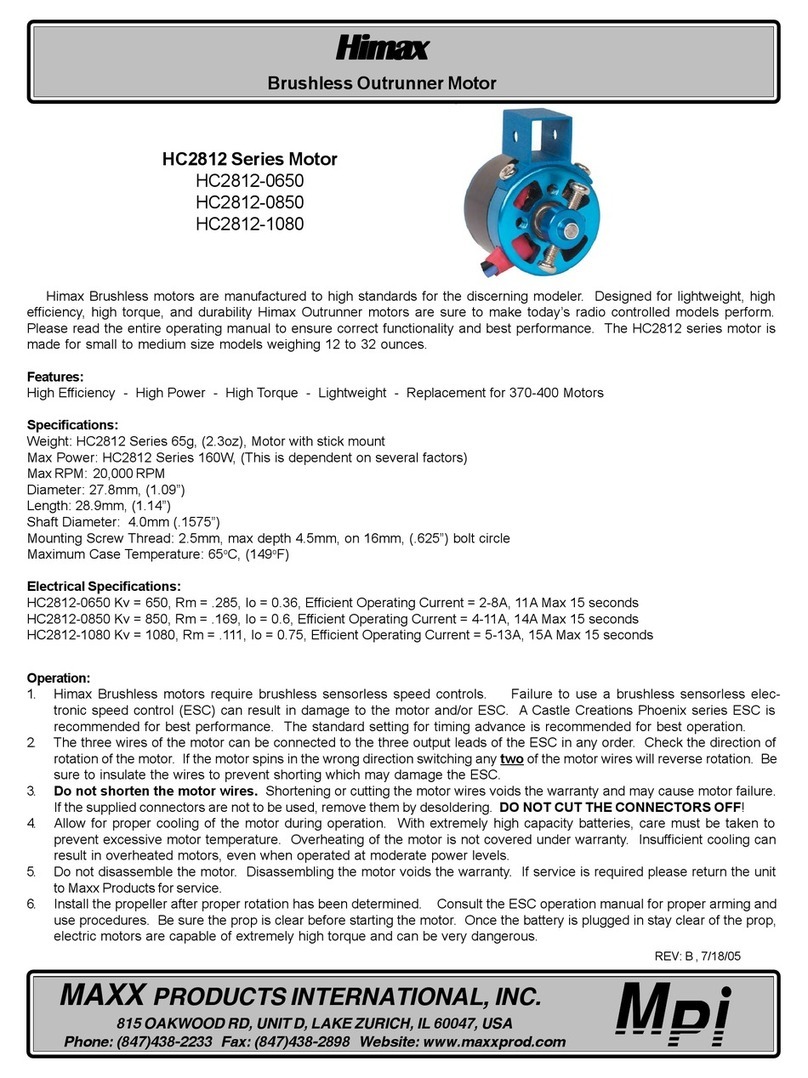
Himax
Himax HC2812 Series User manual
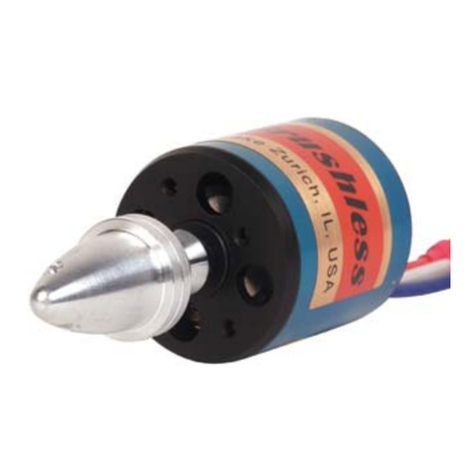
Himax
Himax HB3615 Series User manual
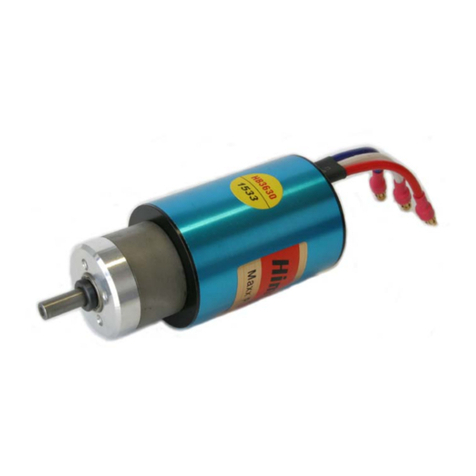
Himax
Himax HB3630 Series User manual
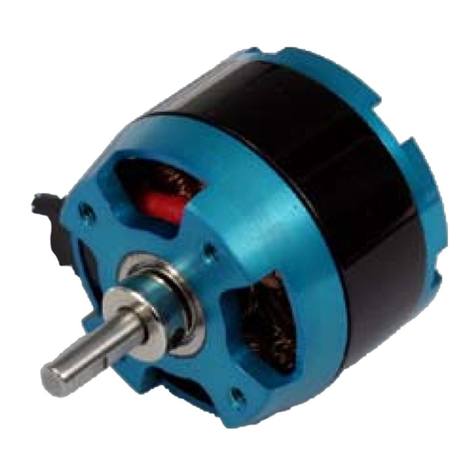
Himax
Himax HC3510-1100 User manual

Himax
Himax HB3630-1043 User manual
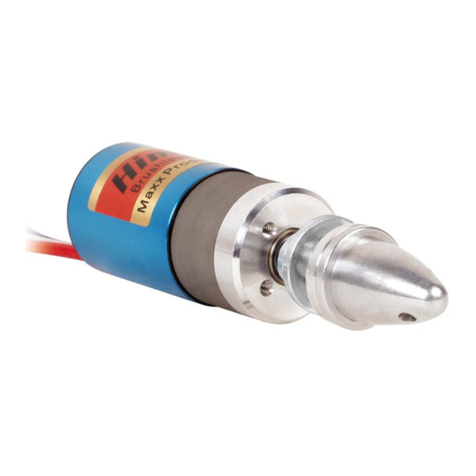
Himax
Himax HB2815 Series User manual
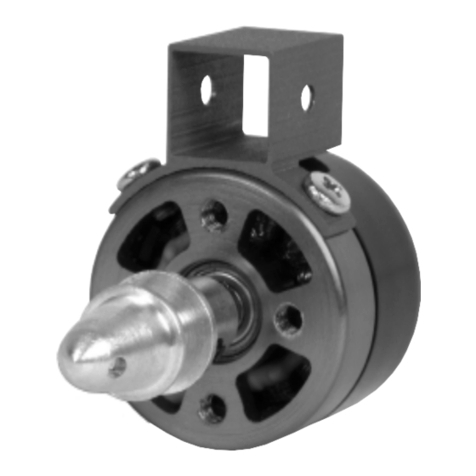
Himax
Himax HC2808 Series User manual
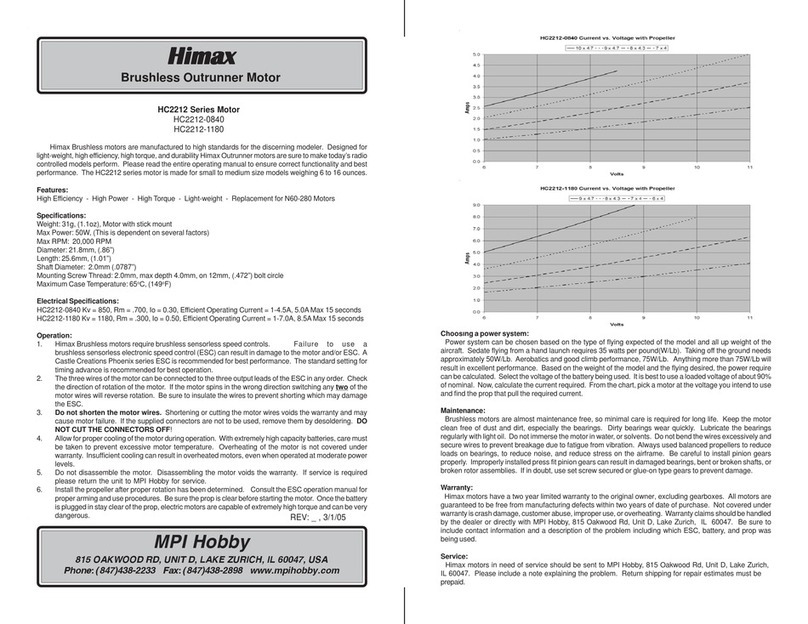
Himax
Himax HC2212 Series User manual
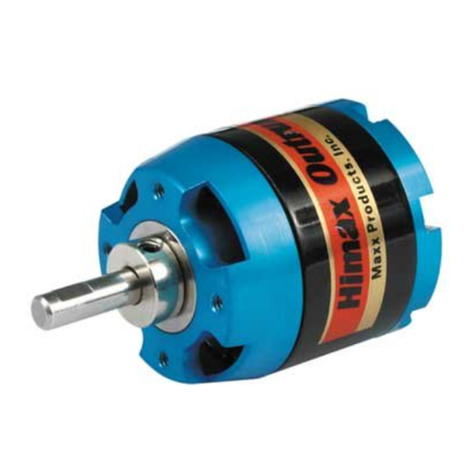
Himax
Himax HC3510-1540 User manual
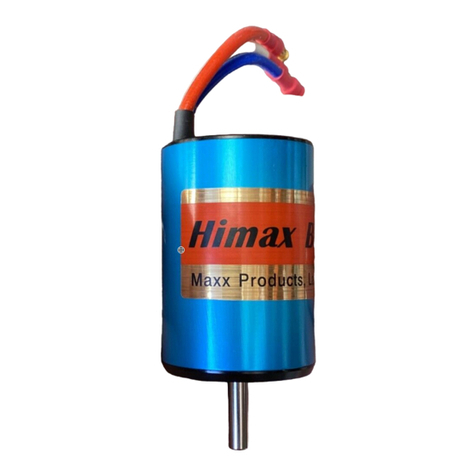
Himax
Himax HA3618 Series User manual
